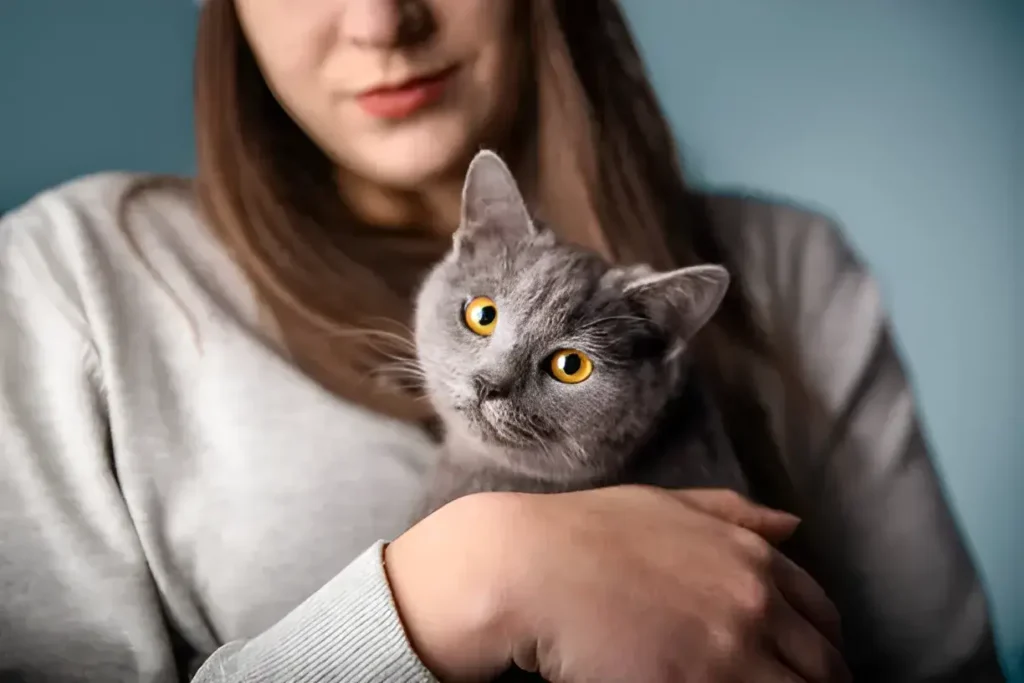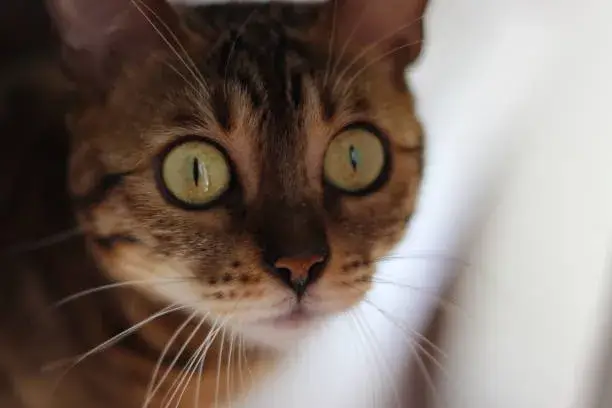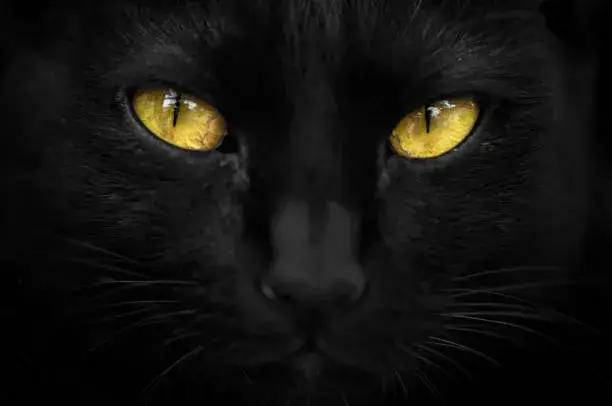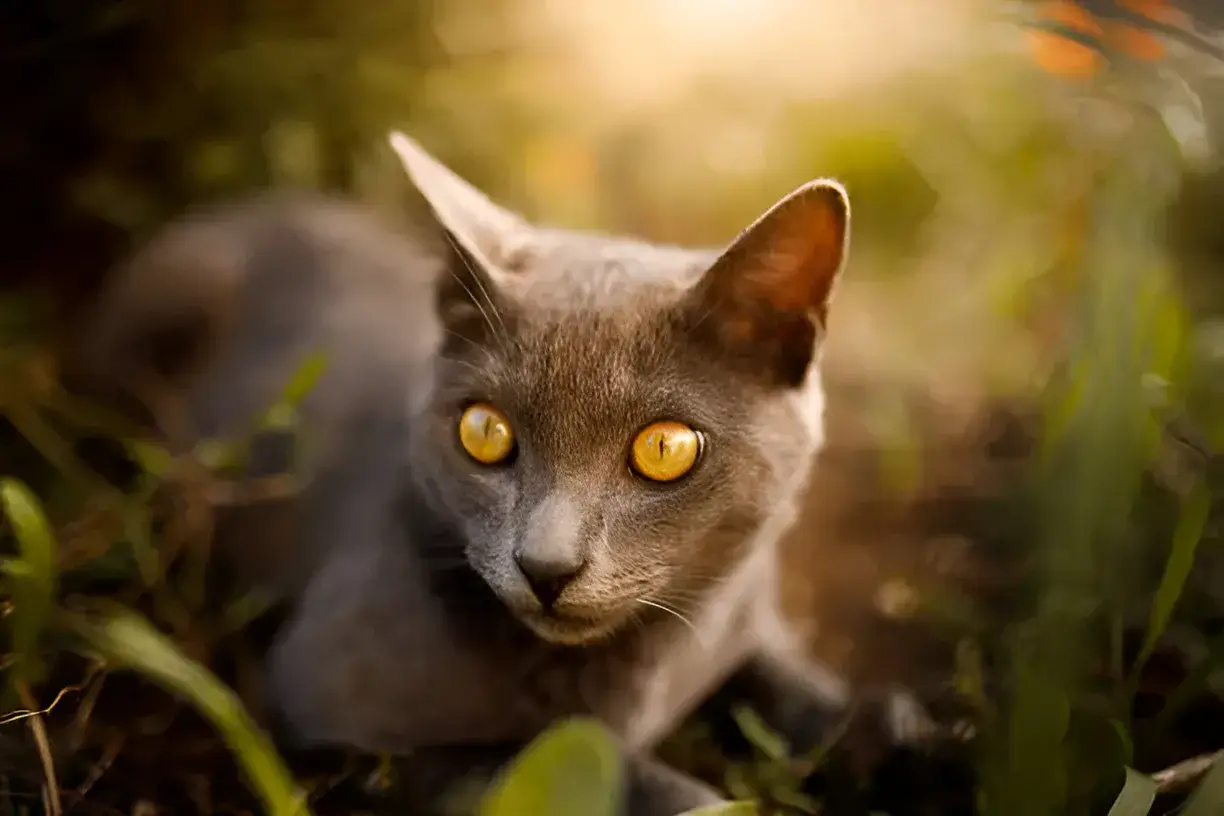Have you ever gazed into your feline friend’s eyes and wondered about the origin of their captivating color? You’re not alone! The most common cat eye color is actually yellow/amber, followed closely by hazel. This is due to a fascinating pigment called melanin. Let’s dive deeper into the world of feline eye colors.
Why Yellow/Amber Eyes Reign Supreme
Melanin, the same pigment that influences human skin and hair color, is also responsible for the hues of your cat’s eyes. Cats with high concentrations of melanin tend to have those striking yellow or amber eyes. Think of those mesmerizing golden orbs that seem to glow!
Hazel Eyes: A Beautiful Blend
Hazel eyes are a captivating mix of yellow and green, sometimes even appearing to shift color slightly based on the lighting. These eyes contain varying levels of melanin, creating a unique and beautiful blend.
Do Cat Eye Colors Influence Personality?
While many myths and legends link eye color to cat personality, there’s no scientific basis for it. Don’t assume a green-eyed cat is mischievous or a blue-eyed cat is aloof – every feline is an individual with their own unique quirks!
The Influence of Genes and Breed

While yellow/amber and hazel are top contenders, your cat’s breed and coat color can influence their ultimate eye color. For instance, white cats are more prone to having beautiful blue eyes. Some iconic breeds, like the Siamese, are renowned for their vivid blue eyes.
Kittens: Eyes that Change Color
Did you know that kittens are born with blue eyes? It takes several weeks for their melanin production to kick in, leading to a gradual shift towards their adult eye color. This transformation is a wonderful part of watching your kitten grow.
Other Eye-Catching Colors
While yellow/amber and hazel take the spotlight, cats can also boast stunning green eyes, captivating copper, or the mesmerizing beauty of odd-colored eyes (a condition called heterochromia). The diversity of cat eye colors is a testament to the wonders of feline genetics!
Images

Image Credit: Marcela Turri Hauff/gettyimages

Image Credit: Nga Dang/gettyimages
Celebrity Cats with Captivating Eyes
Did you know some of our favorite feline friends have unique eye colors? Take Venus the Chimera cat with her striking two different colored eyes, or Coby the Cat with his captivating blue eyes. These celebrity cats showcase the diversity of cat eye colors.
Eye Care Tips for Cats
- Watch for changes: Notice any unusual discharge, cloudiness, excessive tearing, or redness in your cat’s eyes. These could be signs of irritation or an eye issue.
- Keep the area clean: Use a damp, soft cloth to gently remove any dried discharge or debris from around your cat’s eyes.
- When to see the vet: Consult your veterinarian for any eye concerns that are abnormal or don’t improve, as some conditions require professional care.
Did You Know? Amazing Facts About Cat Eyes
- Nighttime vision advantage: Their eyes are specially designed to capture even faint light sources, making them skilled hunters in low-light conditions.
- The source of the eyeshine: The reflective tapetum lucidum layer in their eyes amplifies available light, causing that eerie ‘glowing’ effect in the dark.
- Coat color connection: Sometimes, a cat’s fur color genetics can also influence the final color of their eyes.
Conclusion
Whether your cat sports captivating yellow/amber, enchanting hazel, or any other captivating color, their eyes are a window into their unique beauty. The next time you gaze into their eyes, appreciate those mesmerizing colors and the science behind them!
The photo featured below the post headline is Credit: Capuski/gettyimages
I hope you find this post helpful and informative. If Yes’ feel free to share it with your friends!
Frequently Asked Question
Can a cat’s eye color change throughout its life?
While kittens’ eye color often changes, adult cat eye color is typically stable. However, certain medical conditions or injuries can occasionally impact eye color.
Why are blue eyes more common in white cats?
The gene that causes white fur can sometimes suppress melanin production, contributing to blue eyes.
Do certain breeds have specific eye colors?
Yes, some breeds, like the Siamese or the Ragdoll, are known for their distinctive blue eyes.
What is the rarest eye color for cats?
True green eyes are considered the rarest eye color in cats. Variations like hazel or yellow-green are more common.
How rare are grey eyes in cats?
Grey eyes in cats are not particularly common, but they appear more frequently in certain mixed breeds or cats with diluted coat colors.
Are odd-colored eyes in cats dangerous?
Odd-colored eyes (heterochromia) are usually harmless. However, if your cat develops this condition later in life, it’s wise to consult a vet to rule out underlying issues.
Can a cat’s diet affect its eye color?
No, a cat’s diet will not influence their eye color. Eye color is determined purely by their genetics.
Are cats with blue eyes more likely to be deaf?
Yes, especially in white cats. The gene that causes white fur and blue eyes can sometimes lead to deafness.
Do male and female cats have different eye colors?
No, gender doesn’t play a role in a cat’s eye color. It’s determined by genetics and potentially breed factors.
Can eye color tell you about a cat’s health?
Changes in eye color, cloudiness, or excessive discharge can sometimes signal health problems. It’s best to consult your vet if you notice any concerning changes.
Which color cat eye is best?
There’s no “best” eye color – it’s all about personal preference! Every cat’s eyes hold their own unique beauty.

